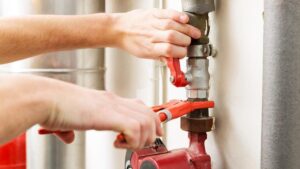In the intricate network of pipes and fixtures that make up a plumbing system, every component plays a vital role in ensuring proper function and efficiency. From simple connectors to complex valves, plumbing parts encompass a wide range of components that are essential for conveying water, managing flow, and maintaining system integrity. Understanding the importance and diversity of plumbing parts is crucial for homeowners, contractors, and plumbing professionals alike.
The Backbone of Plumbing Systems
Plumbing parts serve as the backbone of plumbing systems, enabling the safe and reliable conveyance of water for various purposes, including drinking, bathing, washing, and sanitation. These parts connect pipes, control flow, regulate pressure, and prevent leaks, ensuring the smooth operation of residential, commercial, and industrial plumbing systems. From the moment water enters a building to its final discharge, plumbing parts play a crucial role at every stage of the process.
Types of Plumbing Parts
Plumbing parts encompass a wide range of components, each designed to perform specific functions within a plumbing system. Some common types of plumbing parts include:
- Pipes and Tubing: Pipes and tubing form the primary conduits through which water flows within a plumbing system. They come in various materials, including copper, PVC, PEX, and galvanized steel, each offering different advantages in terms of durability, cost, and compatibility with different types of water.
- Fittings and Connectors: Fittings and connectors are used to join pipes and tubing, allowing for changes in direction, size, and configuration within a plumbing system. Common types of fittings include elbows, tees, couplings, and adapters, which come in materials such as brass, stainless steel, and plastic.
- Valves: Valves are essential for controlling the flow of water within a plumbing system. They allow users to shut off water supply to specific fixtures or sections of piping, regulate water pressure, and prevent backflow. Common types of valves include ball valves, gate valves, check valves, and pressure-relief valves.
- Fixtures and Faucets: Fixtures and faucets are the visible components of a plumbing system that deliver water to users for various purposes. These include sinks, toilets, showers, bathtubs, and outdoor hose bibs, as well as the associated faucets, handles, and drains.
- Traps and Drains: Traps and drains are designed to remove wastewater and prevent sewer gases from entering a building. Traps, such as P-traps and S-traps, create a water seal that blocks gases from rising through the drain, while drains facilitate the removal of wastewater from fixtures.
Importance of Quality and Compatibility
When selecting plumbing parts for a project, whether it’s a new installation, repair, or renovation, it’s essential to prioritize quality and compatibility. Using high-quality parts that meet industry standards ensures durability, reliability, and long-term performance. Additionally, choosing parts that are compatible with existing plumbing systems and local building codes helps prevent issues such as leaks, clogs, and system failures down the line.
Professional Installation and Maintenance
While some plumbing projects may be suitable for DIY enthusiasts, complex installations and repairs often require the expertise of licensed plumbers. Professional plumbers have the knowledge, skills, and tools to properly install, repair, and maintain plumbing systems, ensuring safety, efficiency, and compliance with regulations. Regular maintenance, including inspections, repairs, and replacement of worn-out parts, is essential for preventing costly issues and prolonging the lifespan of plumbing systems.
Conclusion
Plumbing parts are the building blocks of modern plumbing systems, enabling the safe and efficient conveyance of water for various purposes. From pipes and fittings to valves and fixtures, each component plays a crucial role in ensuring the integrity and functionality of plumbing systems. By understanding the importance and diversity of plumbing parts, homeowners, contractors, and plumbing professionals can make informed decisions and ensure the reliability and longevity of plumbing systems for years to come.




